From the Editor – August 2023
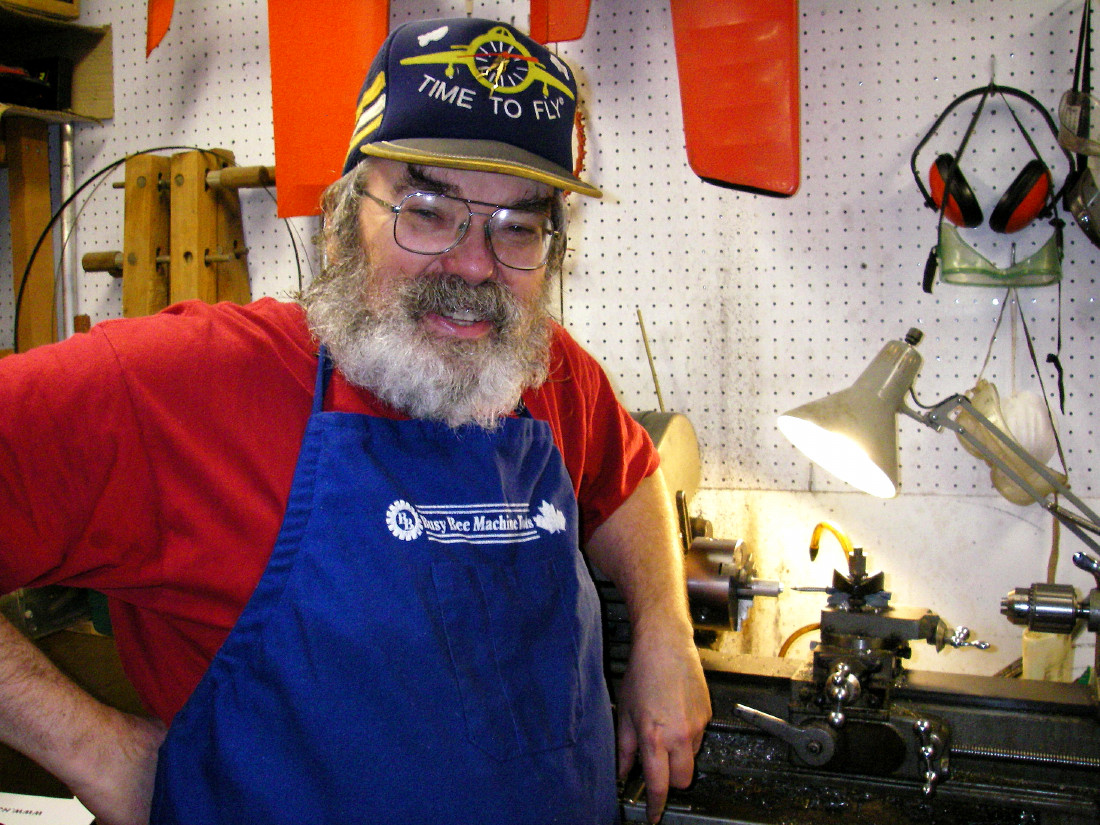 Greetings once more from all-too sunny Coquitlam! Well, August is upon us, which means that we’re now well into summer. Unfortunately, the elevated temperatures and lower-than-normal rainfall that have accompanied the season due to the progressive advance of climate change have continued to challenge Western Canada with a plethora of forest fires and a developing water shortage. Over two-thirds of the Province of British Columbia is now at Level 5 drought status - the highest level, at which adverse impacts upon both communities and ecosystems are considered to be inevitable. By contrast, folks in other areas of North America have been getting way more water than they need! Wish we could work a mutually-beneficial trade ............
Greetings once more from all-too sunny Coquitlam! Well, August is upon us, which means that we’re now well into summer. Unfortunately, the elevated temperatures and lower-than-normal rainfall that have accompanied the season due to the progressive advance of climate change have continued to challenge Western Canada with a plethora of forest fires and a developing water shortage. Over two-thirds of the Province of British Columbia is now at Level 5 drought status - the highest level, at which adverse impacts upon both communities and ecosystems are considered to be inevitable. By contrast, folks in other areas of North America have been getting way more water than they need! Wish we could work a mutually-beneficial trade ............
Either way, getting through the summer season is becoming quite an ordeal. I suppose we’d better get used to it – the ongoing worldwide refusal of both voters and politicians to accept and address the issue of climate change can only result in things becoming progressively worse.
Sadly, the global situation remains as problematic as ever. As I’ve said before, I reckon that all we can do as individuals is carry on as best we can while exercising due caution and responsibility in those areas which remain within our control. That's what I’m doing, anyway. It really does help to know that there’s still a healthy worldwide community of individuals having an ongoing interest in model engines - that’s what keeps me going! My statistics reporting system has continued to report very encouraging visitation figures.
 Confirmation that a significant number of folks are seeking an escape from all that ails us by remaining very much engaged with our hobby comes from the fact that the mail box has remained quite active. Despite the many distractions still preying upon us, I heard from quite a few of you during July, including (in no particular order) Peter Valicek, Gordon Beeby, Dave Zwolak, Don Imrie, Alex Phin, Rich Kacmarsky, Luis Petersen, Michel Rosanoff, William Poli, Maris Dislers, David Burke, Dean Clarke, Jon Fletcher, Tahn Stowe, Chris Cox, Tim Dannels, Brian Hampton, Tony Eifflaender, Ken Croft, Bill Wells, Andrew Longhurst, Martin Dilly, Marcus Tidmarsh, Ian Howlett, Doug Campbell, David Hill, David Morrissey, Paul Smigelski, Tiffany Evans, Sergio Montes, Dennis Merwood, Bob Beaumont, Bob Watts, John French, Amadeus Kurz, Barry Mourant, Mike Conner, Kelley Crozier, Wes Pettinger, Wynn Paul, Larry Davidson, Chris Cox and Neill McRae. Apologies to anyone whom I may have inadvertently missed in the crowd, and apologies also to anyone whose message(s) went unanswered - things do slip through the cracks, especially when I’m distracted! The blog site has continued to justify its existence by contributing a small but steady flow of relevant traffic - thanks for that.
Confirmation that a significant number of folks are seeking an escape from all that ails us by remaining very much engaged with our hobby comes from the fact that the mail box has remained quite active. Despite the many distractions still preying upon us, I heard from quite a few of you during July, including (in no particular order) Peter Valicek, Gordon Beeby, Dave Zwolak, Don Imrie, Alex Phin, Rich Kacmarsky, Luis Petersen, Michel Rosanoff, William Poli, Maris Dislers, David Burke, Dean Clarke, Jon Fletcher, Tahn Stowe, Chris Cox, Tim Dannels, Brian Hampton, Tony Eifflaender, Ken Croft, Bill Wells, Andrew Longhurst, Martin Dilly, Marcus Tidmarsh, Ian Howlett, Doug Campbell, David Hill, David Morrissey, Paul Smigelski, Tiffany Evans, Sergio Montes, Dennis Merwood, Bob Beaumont, Bob Watts, John French, Amadeus Kurz, Barry Mourant, Mike Conner, Kelley Crozier, Wes Pettinger, Wynn Paul, Larry Davidson, Chris Cox and Neill McRae. Apologies to anyone whom I may have inadvertently missed in the crowd, and apologies also to anyone whose message(s) went unanswered - things do slip through the cracks, especially when I’m distracted! The blog site has continued to justify its existence by contributing a small but steady flow of relevant traffic - thanks for that.
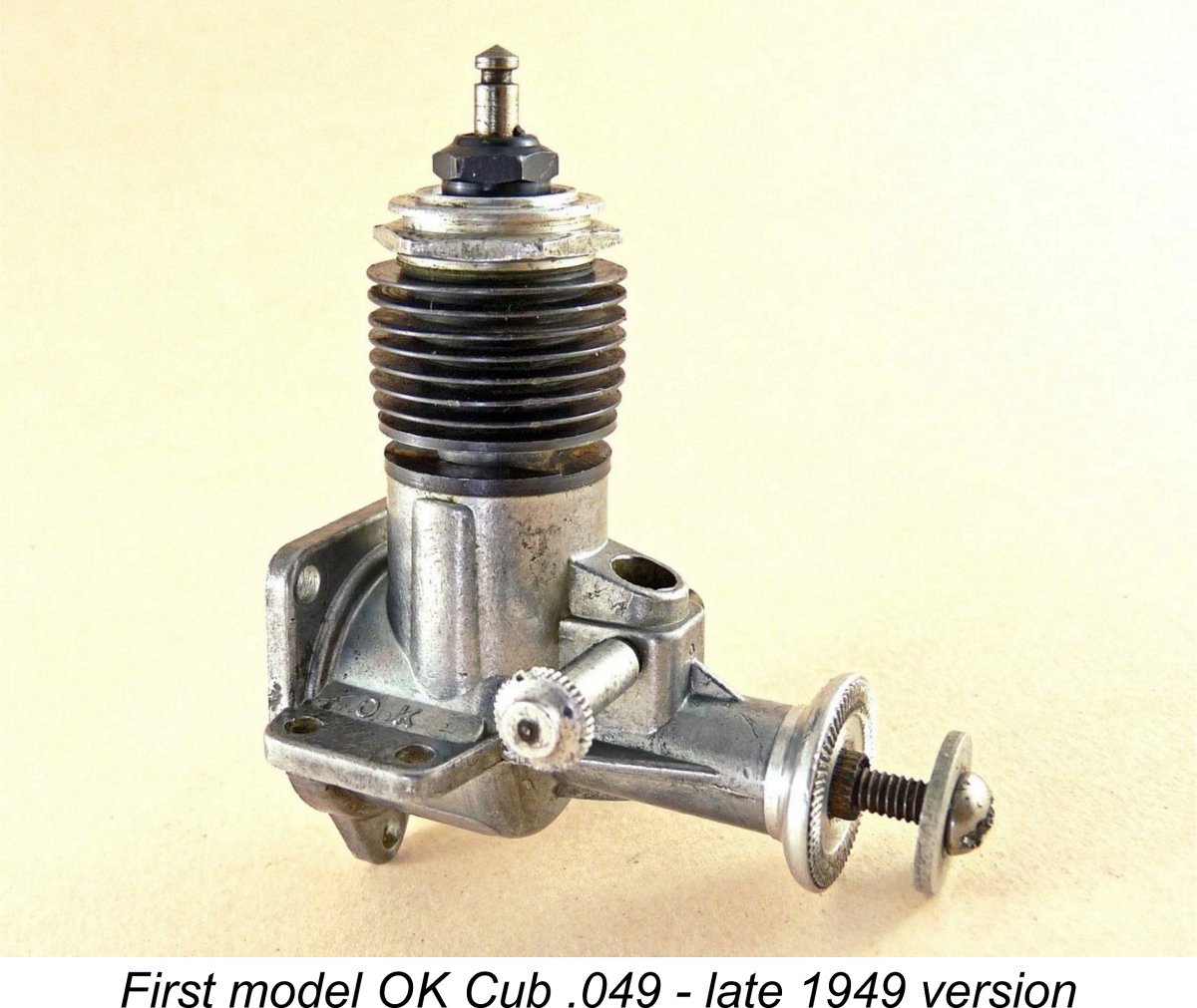 I’ll begin this month’s news update with an announcement which you won’t see here very often – the introduction of a new feature on this website! During June, my friend and colleague Wes Pettinger of Richardson, Texas sent in a very enjoyable anecdote about his first model engine - a 1949 OK Cub .049 - and his early experiences using it to learn to fly R/C, ending up with a crash into a pig pen whose occupants immediately consumed the model (as pigs will do, durn it!)! This story was so entertaining and brought back so many warm memories that I began to think that such recollections should be more widely shared.
I’ll begin this month’s news update with an announcement which you won’t see here very often – the introduction of a new feature on this website! During June, my friend and colleague Wes Pettinger of Richardson, Texas sent in a very enjoyable anecdote about his first model engine - a 1949 OK Cub .049 - and his early experiences using it to learn to fly R/C, ending up with a crash into a pig pen whose occupants immediately consumed the model (as pigs will do, durn it!)! This story was so entertaining and brought back so many warm memories that I began to think that such recollections should be more widely shared.
To facilitate this, I've set up a new page in my “Engine Articles” section to accommodate engine-related anecdotes submitted by readers, purely for the reading pleasure of their fellow enthusiasts. We enjoy a great hobby, and such anecdotes do much to remind us of just how great it really is! The new page is entitled “Readers’ Recollections”. I've started things off with Wes's contribution, followed by a few personal recollections of my own. Look upon it as an extra bonus article for the month! I hope that some 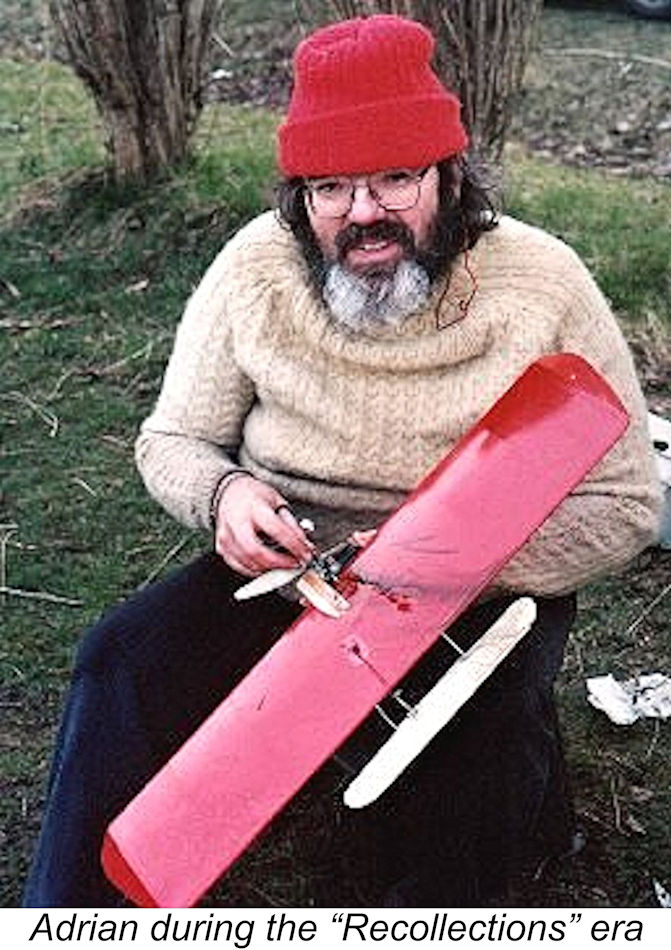 more of my valued readers will feel able to contribute as time goes by.
more of my valued readers will feel able to contribute as time goes by.
A few ground rules - first, the submissions must be true and must tell an engine-related story, preferably with strong elements of human interest and/or humour. No fictional accounts and no technical dissertations, please! Secondly, they shouldn't be too long. A two or three-page Word document in 12-pitch font seems to be about right - space won't permit the inclusion of anything longer. Thirdly, relevant images will always be welcome, but they have to be of sufficiently high quality to allow publication without excessive photoshopping – keeping this website going leaves me no time for that. The stories already posted will give you some idea of the kind of length and content that I'm looking for.
Since this is my own site which I fund entirely from my own resources, I will exercise my full editorial prerogative in accepting or rejecting a given submission on the basis of the extent to which it meets the foregoing requirements. I will also reserve the right to edit all submissions which are selected for inclusion - if you aren't willing to submit to editorial oversight, don't submit!! That said, I look forward to hearing from a few more of you as time goes by.
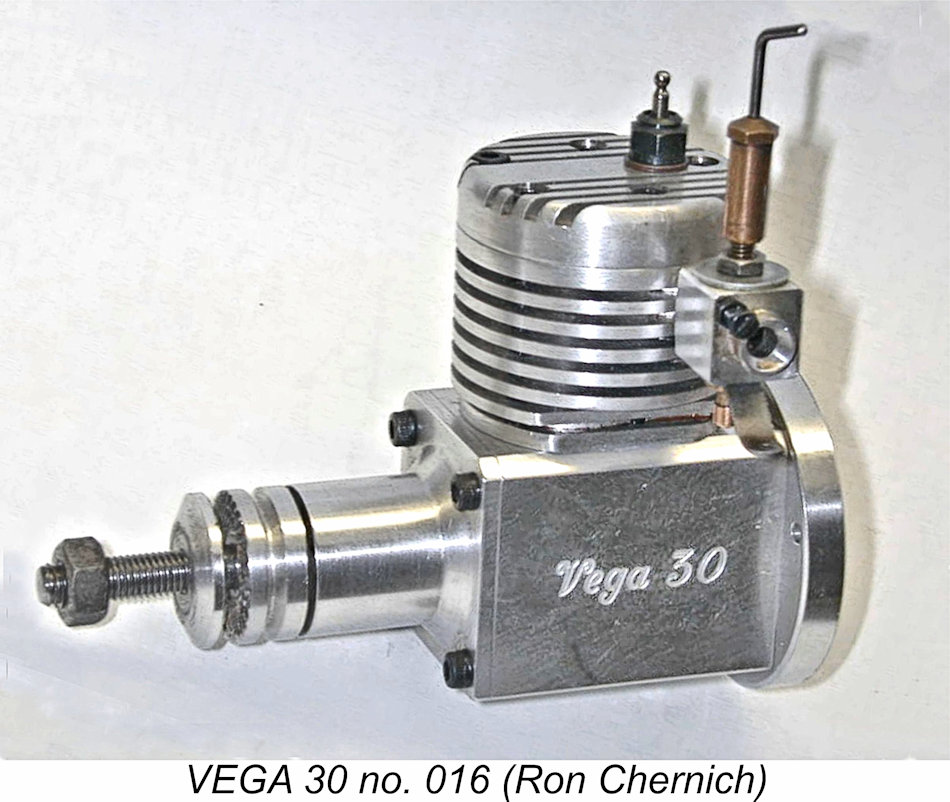 Last month’s article on the Vega four-stroke engines from England seems to have played well. I was particularly delighted to hear from my good friend Ken Croft of England, who told me that the late Ron Chernich had actually prepared working CAD drawings for the Vega 30 which was the subject of his original “Model Engine News” (MEN) article. Not only that, but Ken sent me a nice clear copy of the plans in pdf format. In his article, Ron stated that the all-barstock Vega would make an excellent home-building project. If anyone’s interested in getting a copy of these plans in order to have a go, click on this link. Alternatively, you can contact me through this website. Big thanks to Ken for sharing this with us!
Last month’s article on the Vega four-stroke engines from England seems to have played well. I was particularly delighted to hear from my good friend Ken Croft of England, who told me that the late Ron Chernich had actually prepared working CAD drawings for the Vega 30 which was the subject of his original “Model Engine News” (MEN) article. Not only that, but Ken sent me a nice clear copy of the plans in pdf format. In his article, Ron stated that the all-barstock Vega would make an excellent home-building project. If anyone’s interested in getting a copy of these plans in order to have a go, click on this link. Alternatively, you can contact me through this website. Big thanks to Ken for sharing this with us!
On the same topic, a welcome contact came from Doug Campbell, who was able to provide some clarification regarding the later stages of the VEGA project following John Harbone's withdrawal. I’ve added Doug’s information to the “Footnote” section of the VEGA article, with my sincere thanks to Doug.
As readers of my article on the P.A.W. engines will know, Progress Aero Works of Macclesfield in England has long been one of the most deservedly famous names in model diesel engine history. However, it seems to be a largely forgotten fact that for a brief period of time P.A.W. also produced glow-plug motors! In the early 1980's, in response to pressure from a number of their wholesalers, P.A.W. embarked upon the production of glow-plug versions of their 1.5 cc (.09 cuin.) and 2.5 cc (.15 cuin.) models. These were based upon the company's plain bearing semi-Schnuerle ported “Contest” diesel models which had then recently been developed.
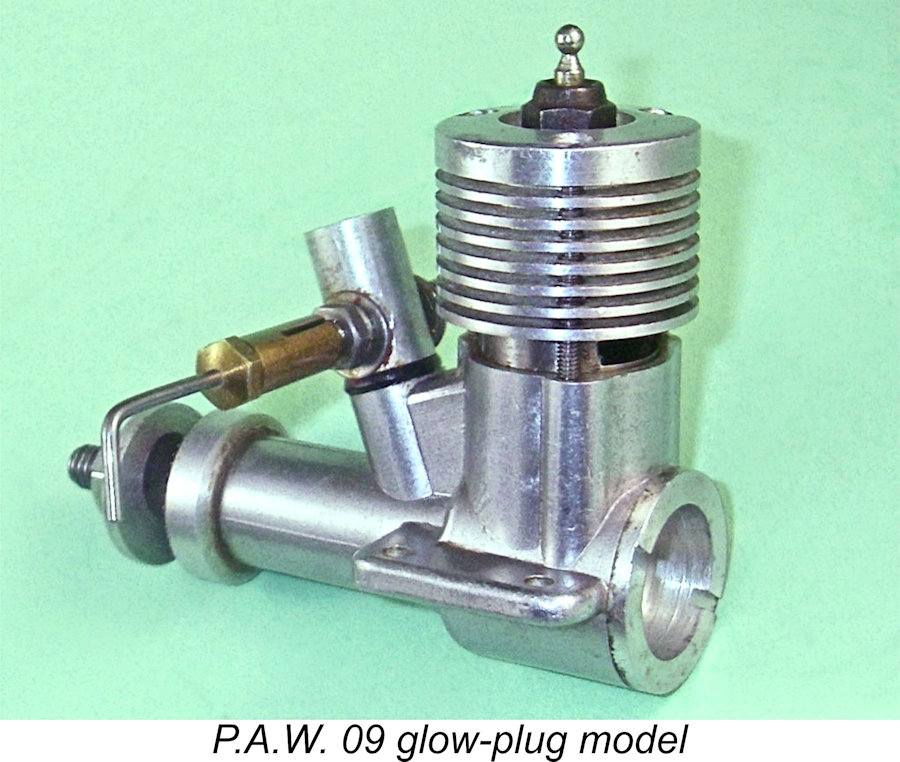 Between 200 and 300 examples of each glow-plug variant were produced between 1982 and 1985. Unfortunately, while these engines started easily and ran well enough, they proved to be dismal under-performers by comparison with their diesel equivalents. In response to my inquiry, Tony Eifflaender was quite open about this, putting it down to the fact that the Eifflaenders had no experience with glow-plug engines. This was the reason for the engines’ relatively brief tenure on the market.
Between 200 and 300 examples of each glow-plug variant were produced between 1982 and 1985. Unfortunately, while these engines started easily and ran well enough, they proved to be dismal under-performers by comparison with their diesel equivalents. In response to my inquiry, Tony Eifflaender was quite open about this, putting it down to the fact that the Eifflaenders had no experience with glow-plug engines. This was the reason for the engines’ relatively brief tenure on the market.
During July, my good friend Luis Petersen of Denmark very kindly sent me an as-new example of the 1.5 cc (.09 cuin.) P.A.W. glow-plug model. Big thanks to Luis!! A test of this engine following a period of running-in confirmed Tony’s comments regarding the engine’s performance limitations. While it’s a very easy starter and a dead-smooth runner, it supported Tony’s statement that the glow-plug models fell well short of matching their diesel equivalents in terms of power output. Even so, it represents a fascinating and little-known facet of the P.A.W. story. I’ve added a brief commentary to the original P.A.W. article.
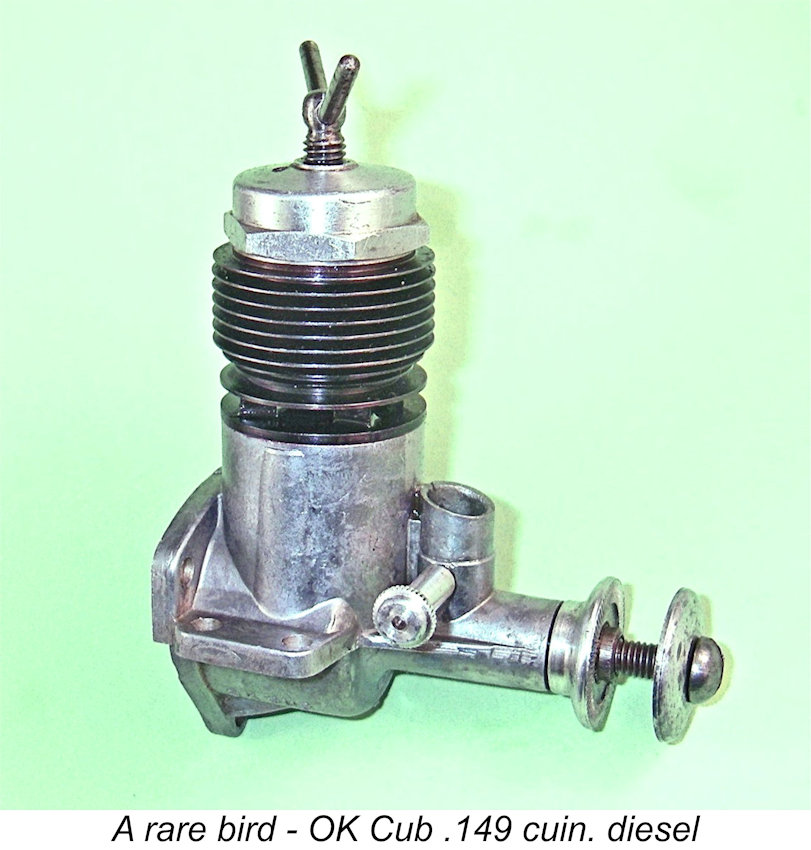 Another very interesting and unusual arrival during July was a rare example of the OK Cub .149 cuin. diesel. The 1952 Cub .149 cuin. glow-plug model is of course very well known, but the fact that a handful of examples of a diesel version were made in 1953 is far less frequently recalled. This model was accompanied by a diesel of .060 cuin. displacement which also never reached full production status. The exact number completed is unclear, but it seems safe to say that fewer than 500 examples of these engines were actually produced. They were never advertised in the USA, apparently being sent mostly to Europe and South America for field testing below the radar prior to the finalization of the design of the Cub .075 diesel model which was the first full release of a Cub diesel in late 1953. I hope to present a bench test report on this unusual engine in due course.
Another very interesting and unusual arrival during July was a rare example of the OK Cub .149 cuin. diesel. The 1952 Cub .149 cuin. glow-plug model is of course very well known, but the fact that a handful of examples of a diesel version were made in 1953 is far less frequently recalled. This model was accompanied by a diesel of .060 cuin. displacement which also never reached full production status. The exact number completed is unclear, but it seems safe to say that fewer than 500 examples of these engines were actually produced. They were never advertised in the USA, apparently being sent mostly to Europe and South America for field testing below the radar prior to the finalization of the design of the Cub .075 diesel model which was the first full release of a Cub diesel in late 1953. I hope to present a bench test report on this unusual engine in due course.
Maris Dislers sent along a very useful reference for collectors of the fine series of Australian-made engines which were marketed by the late Gordon Burford under the Taipan brand-name. This takes the form of an Excel spreadsheet listing all the part numbers/parts for the later Taipan engines. It was compiled by Dallas Healey from available printed ex-factory lists, with help from Tahn Stowe and Maris Dislers. I hope that some of you find it useful!
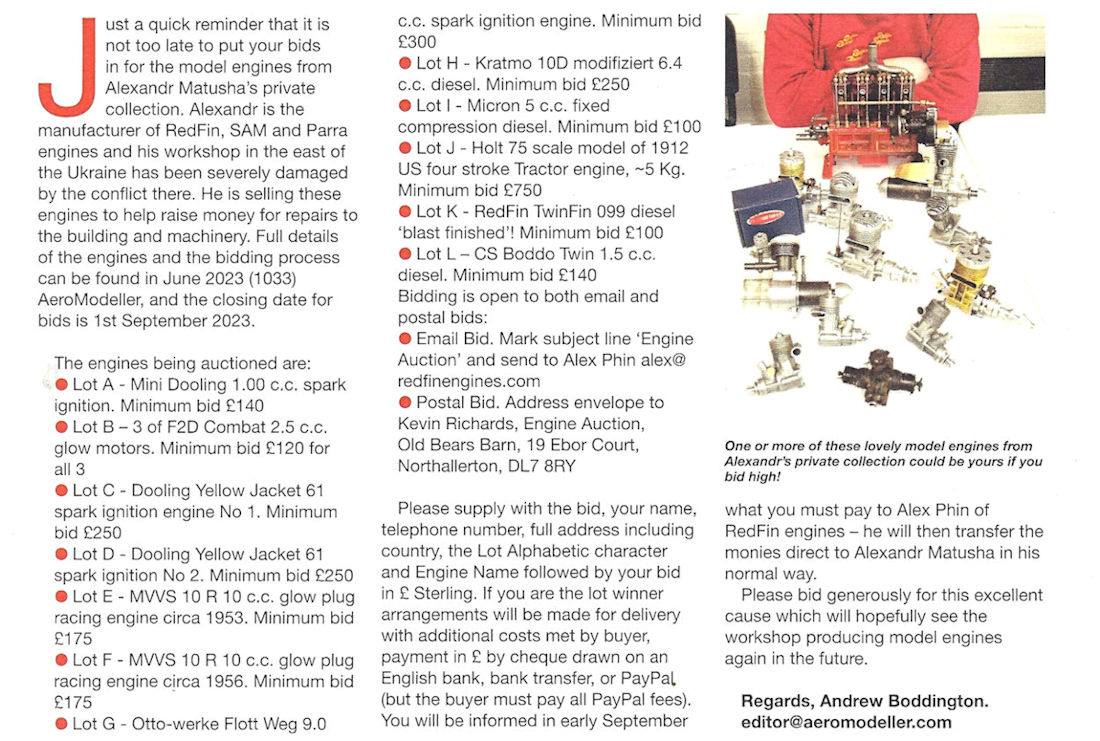 Last month I reported on the auction of part of Ukrainian resident Alexandr Matusha’s engine collection which is intended to raise some extra funds to help him resume his Karkiv-based business making high-quality model engines following the disastrous impact of the ongoing Russian assault on Ukraine. A reminder was included in issue no. 1035 of “AeroModeller” magazine for August 2023. I’ve attached a scan for the information of readers who may not have seen it previously. Just before this editorial was finalized, I heard from Alex Phin of Redfin Engines that the auction is proceeding smoothly but that more bids would be welcome. Don't hang back - get in there and bid high! This is a good cause!!
Last month I reported on the auction of part of Ukrainian resident Alexandr Matusha’s engine collection which is intended to raise some extra funds to help him resume his Karkiv-based business making high-quality model engines following the disastrous impact of the ongoing Russian assault on Ukraine. A reminder was included in issue no. 1035 of “AeroModeller” magazine for August 2023. I’ve attached a scan for the information of readers who may not have seen it previously. Just before this editorial was finalized, I heard from Alex Phin of Redfin Engines that the auction is proceeding smoothly but that more bids would be welcome. Don't hang back - get in there and bid high! This is a good cause!!
Speaking of Redfin Engines, the long-awaited Blue Streak 0.6 cc mini-Rivers diesel has arrived from Ukraine! Alexandr Matusha has somehow managed to complete the run despite the difficulties under which he is currently operating. Alex Phin was hoping that the engines might be blue-anodised in keeping with the “Blue Streak” 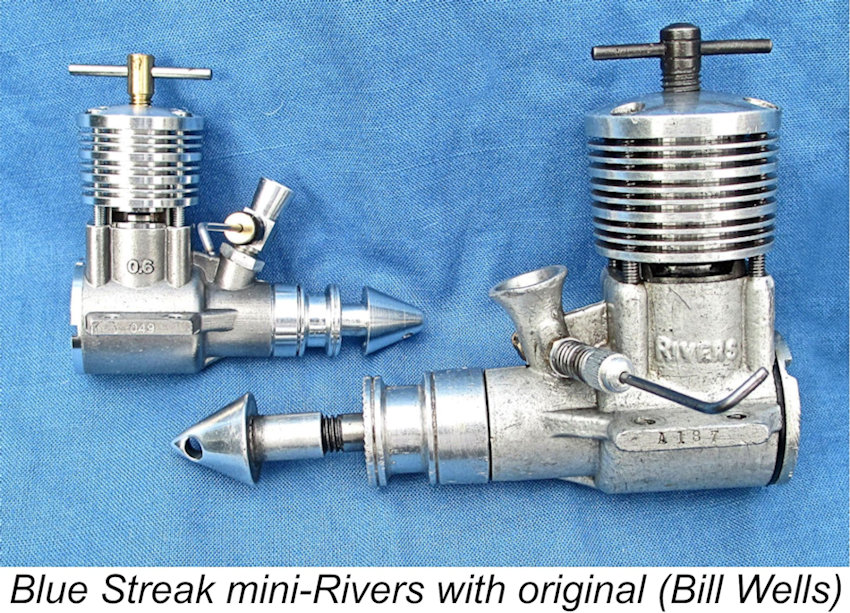 name under which the engine is offered by Redfin. However, it’s actually un-anodised, like the original Rivers engines, actually making it a closer mini-replica. Price is £125 plus postage. My own example no. 004 has already arrived, and it more than meets all of my expectations. Congratulations to Alexandr! l gather that Maris Dislers will have a review in “AeroModeller” magazine at some point in the near future.
name under which the engine is offered by Redfin. However, it’s actually un-anodised, like the original Rivers engines, actually making it a closer mini-replica. Price is £125 plus postage. My own example no. 004 has already arrived, and it more than meets all of my expectations. Congratulations to Alexandr! l gather that Maris Dislers will have a review in “AeroModeller” magazine at some point in the near future.
Alex also advised that Alexandr is now beginning to make progress on the long-planned SAM 250 2.5 cc diesel. Interested readers can contact Redfin Engines to monitor the status of this project. My own name's already on one when it becomes available!
During July, I became aware of a new resource for those of us interested in aeromodelling history. This takes the form of a new 2-volume book on Stunt History by well-known American long-time control-line stunt competitor and historian of the Precision Aerobatics Model Pilot Association (PAMPA) Wynn Paul. This high-quality 2-volume publication covers the history of control line stunt from the very beginning up to 2014. The set consists of two 9x12 in. hardback books in a beautiful slip case. There’s a total of 975 pages and 1500 photographs, many of them rare images from bygone days.
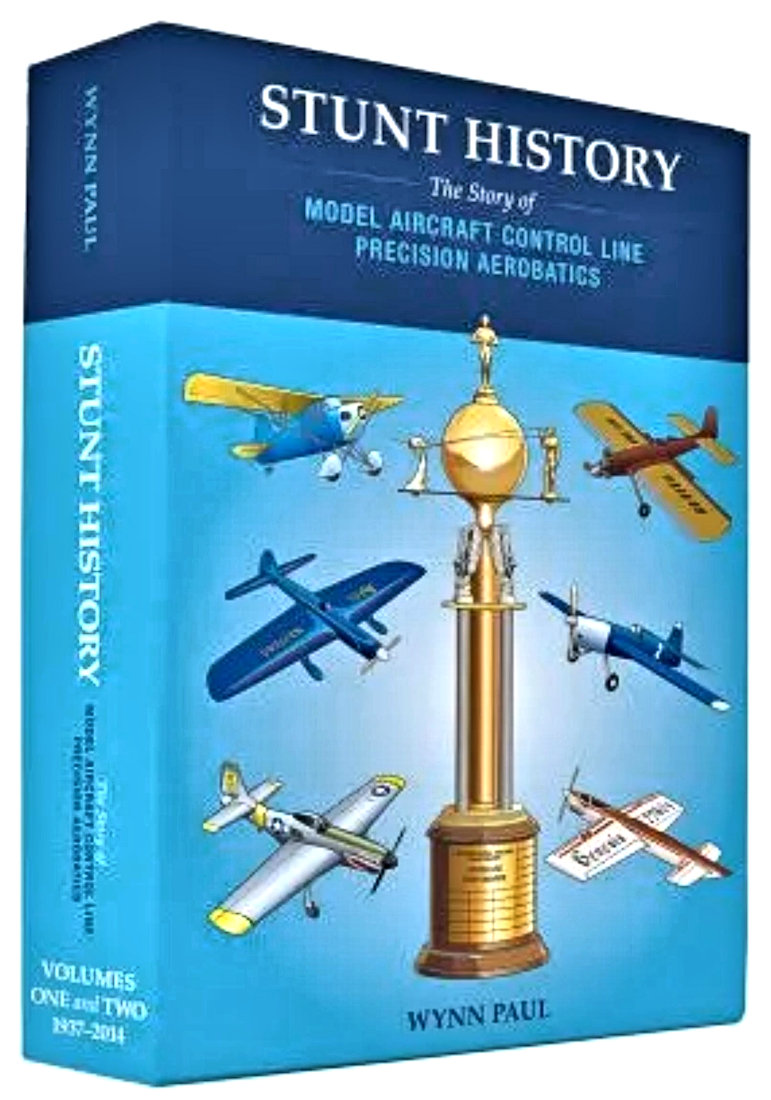 The first chapter is a short history of the development of model airplanes, starting with Leonardo da Vinci and going through all types of gliders, the first model airplane engines, the start of control line in 1937 and also the beginnings of radio control. Thereafter, each year from 1945 to 2014 is the subject of a separate chapter which summarizes that year’s control-line stunt developments in terms of airplanes, engines, the stunt pattern, building methods, kit releases, planes in magazine articles, bios of fliers, results of Nationals, Team Trials, World Championships, results of other high-profile contests, etc., etc. The various chapters are extensively illustrated. Appendix One is a compilation of over 1600 stunt plane specs from 1937 to 2014.
The first chapter is a short history of the development of model airplanes, starting with Leonardo da Vinci and going through all types of gliders, the first model airplane engines, the start of control line in 1937 and also the beginnings of radio control. Thereafter, each year from 1945 to 2014 is the subject of a separate chapter which summarizes that year’s control-line stunt developments in terms of airplanes, engines, the stunt pattern, building methods, kit releases, planes in magazine articles, bios of fliers, results of Nationals, Team Trials, World Championships, results of other high-profile contests, etc., etc. The various chapters are extensively illustrated. Appendix One is a compilation of over 1600 stunt plane specs from 1937 to 2014.
Now 86 years old, Wynn has spent 14 years assembling the data upon which this book is based, travelling a somewhat rocky road as he did so but never giving up. At around US$225 plus postage, the book isn’t cheap. However, it will probably stand as the definitive source for information on control-line stunt models, the guys who flew them and the engines that powered them. I wish this effort every success!! You can easily order your copy online.
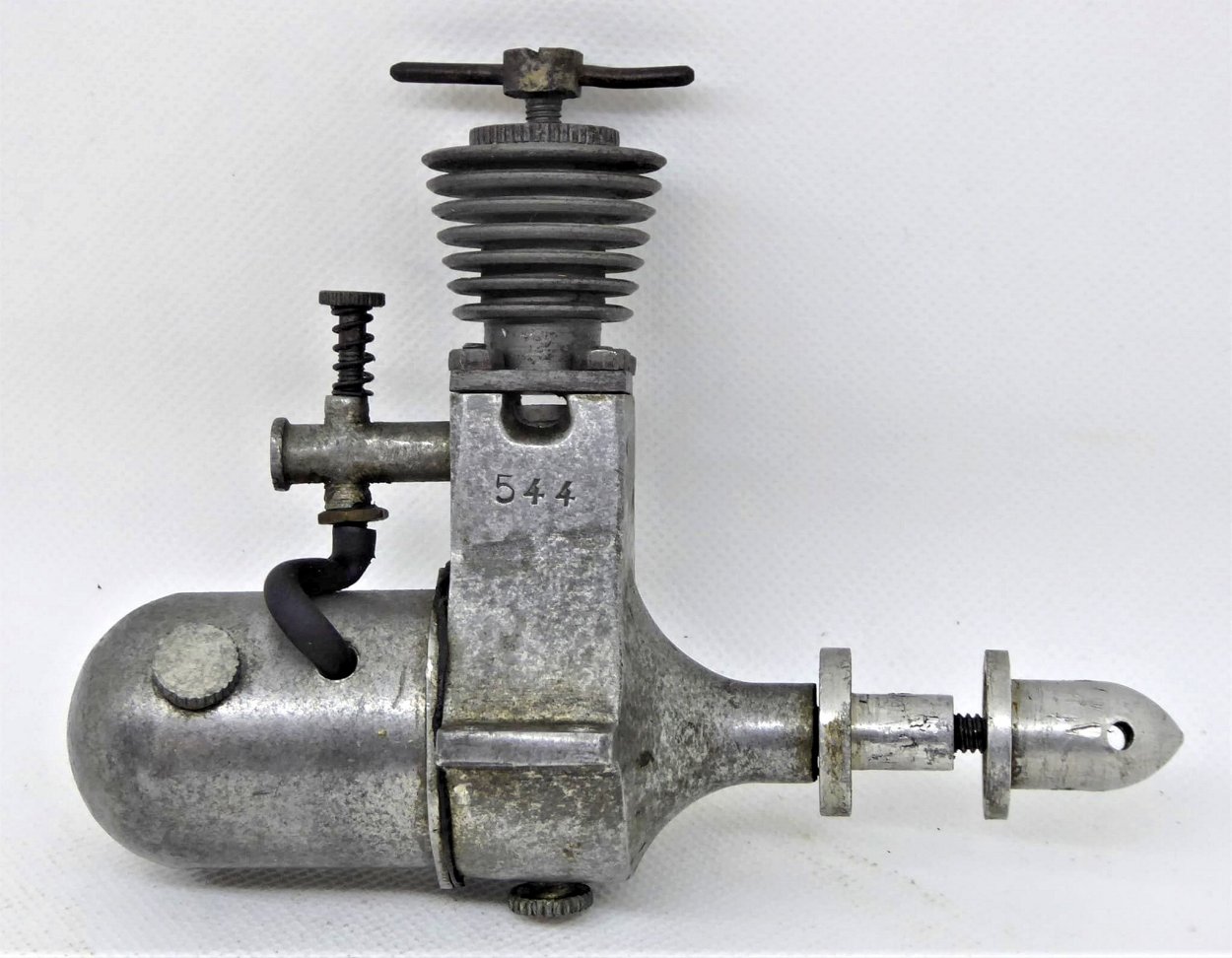 Once in a while, I experience the satisfaction of having a hitherto-unrecognized engine submitted by a reader identified by another reader. In my December 2022 Editorial I drew attention to a nice-looking but unidentified sideport diesel which had been brought to my attention by my good mate Peter Valicek. The image provided by Peter is seen at the left. I added this to my “Wotizit” pages, without result for a long time. Then out of the blue, reader Amadeus Kurz made the identification! It’s a 2.44 cc diesel called the Mirus Senior II produced by the Italian maker Emilio Biraghi around 1944.
Once in a while, I experience the satisfaction of having a hitherto-unrecognized engine submitted by a reader identified by another reader. In my December 2022 Editorial I drew attention to a nice-looking but unidentified sideport diesel which had been brought to my attention by my good mate Peter Valicek. The image provided by Peter is seen at the left. I added this to my “Wotizit” pages, without result for a long time. Then out of the blue, reader Amadeus Kurz made the identification! It’s a 2.44 cc diesel called the Mirus Senior II produced by the Italian maker Emilio Biraghi around 1944.
Emilio Biraghi was a young sportsman from the Milan area. He had been involved in modelling and other sports since the late 1930s. Given his relative proximity to Switzerland, he was able to buy a few foreign engines there which inspired him to pursue his career as an industrialist. The turning point was a sports victory, the prize money from which was spent to buy a Dyno diesel. That engine inspired the production of a series of model diesel engines by Biraghi. My sincere thanks to Amadeus for sharing this information with the rest of us!
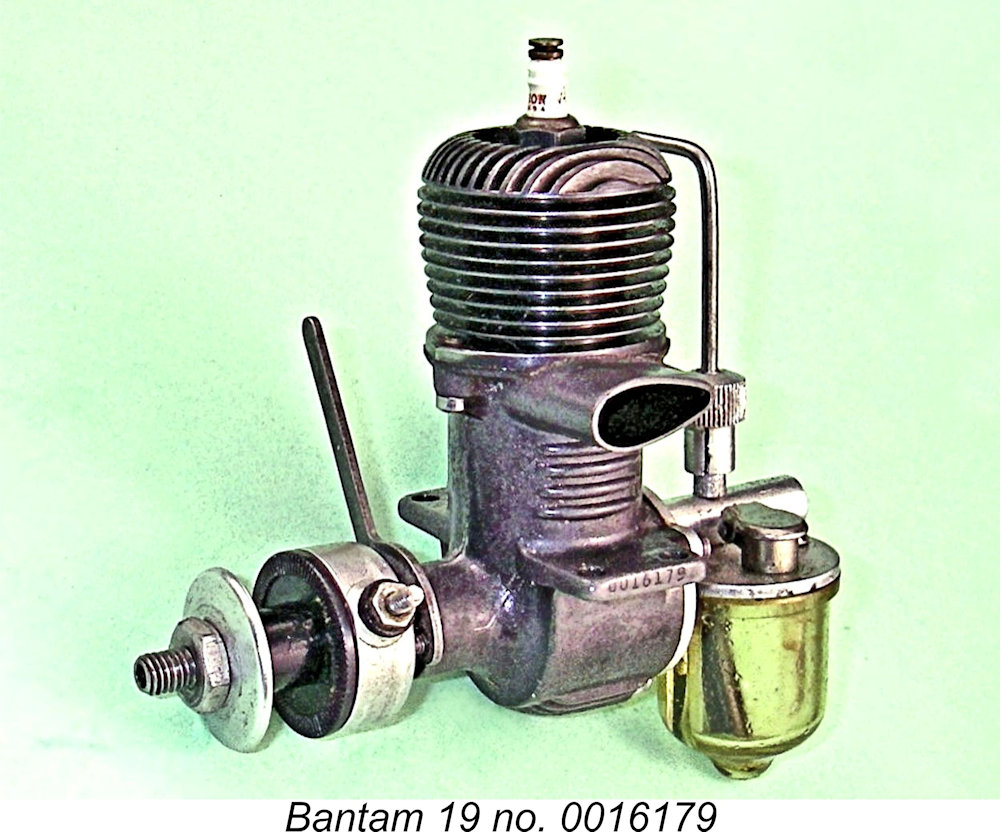 Turning now to this month’s lead articles, we have yet another threesome. This time, the mix is a little unusual – two of the three articles are on the same topic! The odd man out is a detailed review of the well-known Bantam 19 series which originated in America during the pre-WW2 years and survived in production into the glow-plug era of the late 1940’s. I had a good deal of much-appreciated help from Maris Dislers in developing this article – thanks, mate! Anyone who has ever run one of these units will know just how satisfactory they are to operate and use. My article will hopefully explain the engine’s enduring popularity – it’s richly merited!
Turning now to this month’s lead articles, we have yet another threesome. This time, the mix is a little unusual – two of the three articles are on the same topic! The odd man out is a detailed review of the well-known Bantam 19 series which originated in America during the pre-WW2 years and survived in production into the glow-plug era of the late 1940’s. I had a good deal of much-appreciated help from Maris Dislers in developing this article – thanks, mate! Anyone who has ever run one of these units will know just how satisfactory they are to operate and use. My article will hopefully explain the engine’s enduring popularity – it’s richly merited!
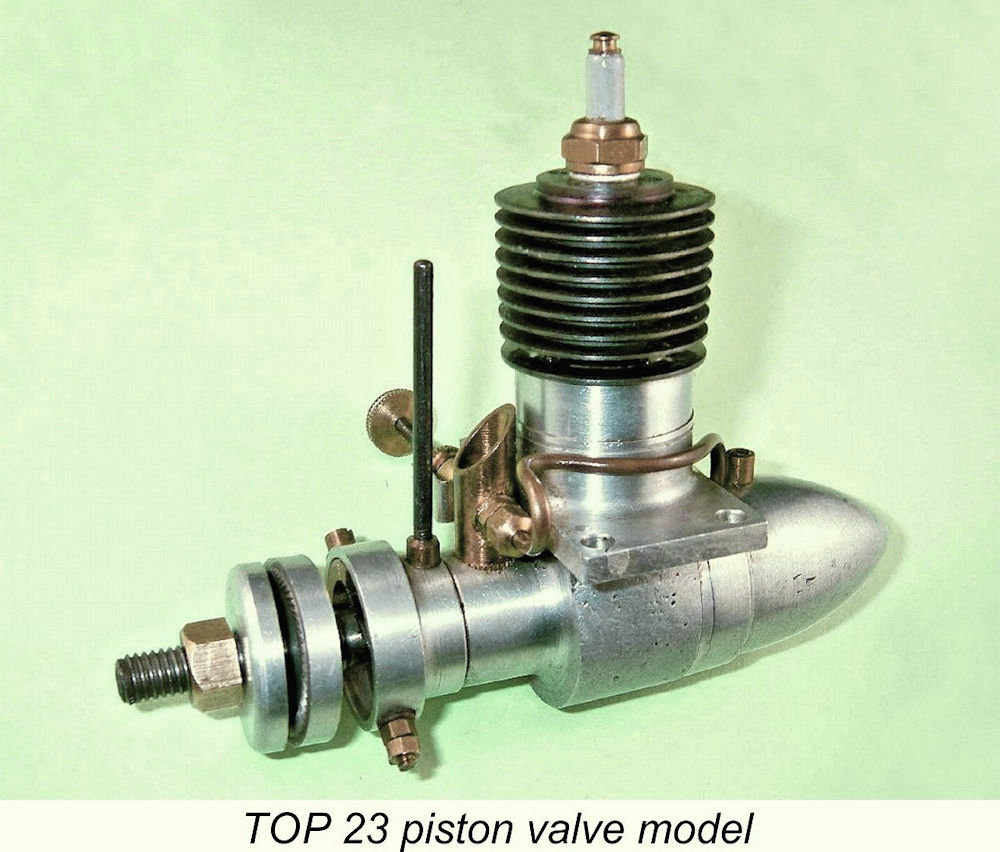 The MEN transfer article for August presents a history of the somewhat obscure TOP range from early post-WW2 Japan. This article covers the start-to-finish story of the TOP engines as far as it can be recovered today. However, the original MEN article omitted the answer to a very important question about which many enthusiasts are curious – how do the rather unusual piston-valve TOP designs run? To answer that one, I ran a detailed analysis and test of my near-mint TOP 23 piston-valve model. That report forms the third article for August. I think you’ll be as surprised as I was – the engine confounded my expectations by starting easily and running remarkably well!
The MEN transfer article for August presents a history of the somewhat obscure TOP range from early post-WW2 Japan. This article covers the start-to-finish story of the TOP engines as far as it can be recovered today. However, the original MEN article omitted the answer to a very important question about which many enthusiasts are curious – how do the rather unusual piston-valve TOP designs run? To answer that one, I ran a detailed analysis and test of my near-mint TOP 23 piston-valve model. That report forms the third article for August. I think you’ll be as surprised as I was – the engine confounded my expectations by starting easily and running remarkably well!
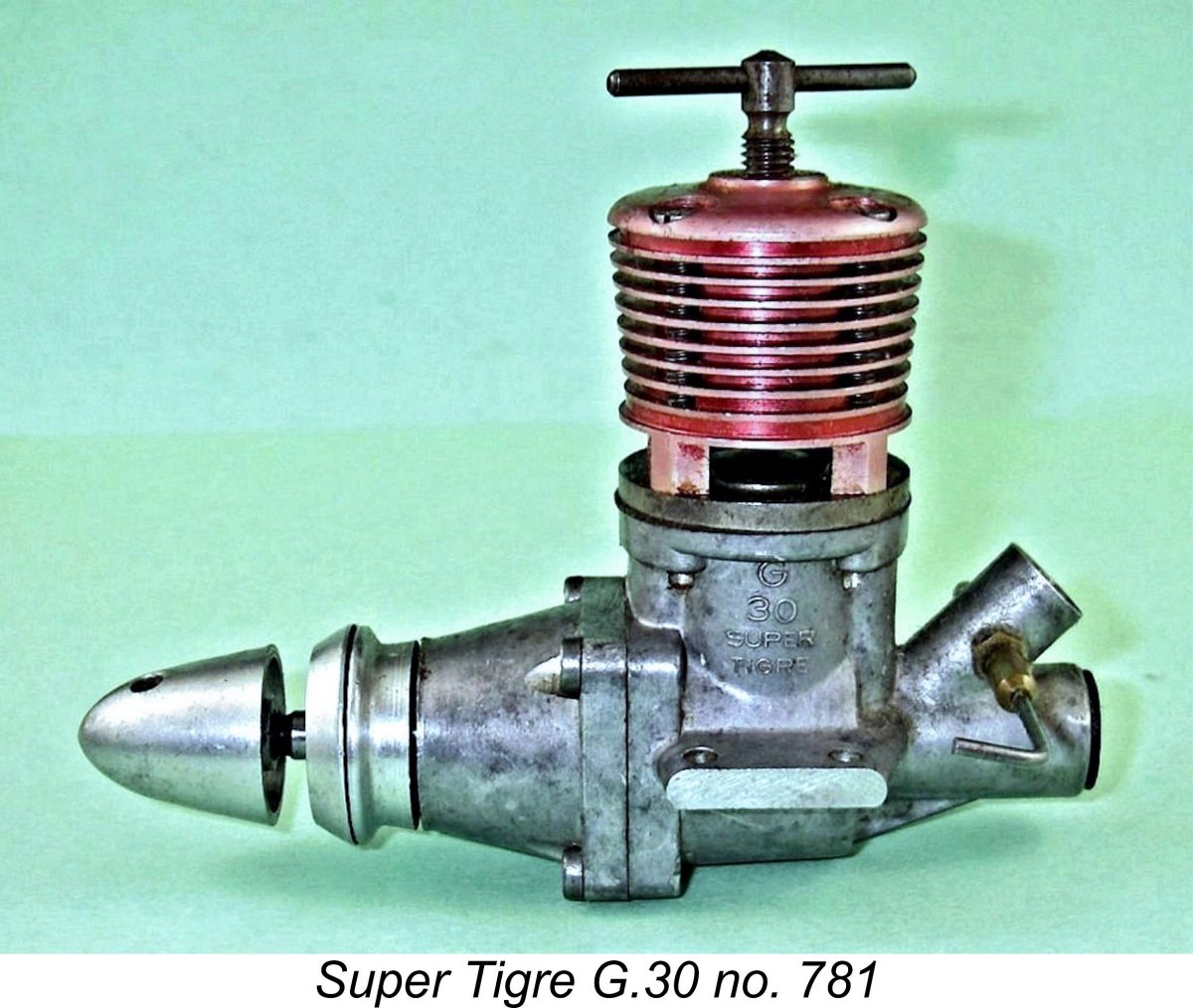 For September, we’ll be paying our first visit to Italy for a while to take a long hard look at the Super Tigre G.30 drum valve diesel of the late 1950’s. This engine represented a refreshingly different approach to the challenge of creating a 2.5 cc diesel to take on the all-conquering Oliver Tiger in team racing and free flight events. With its rear drum valve and its individualistic cylinder porting, it certainly maintained the reputation for design originality which had long been a feature of the work of Super Tigre designer Jaures Garofali. The article will include a full test of the engine.
For September, we’ll be paying our first visit to Italy for a while to take a long hard look at the Super Tigre G.30 drum valve diesel of the late 1950’s. This engine represented a refreshingly different approach to the challenge of creating a 2.5 cc diesel to take on the all-conquering Oliver Tiger in team racing and free flight events. With its rear drum valve and its individualistic cylinder porting, it certainly maintained the reputation for design originality which had long been a feature of the work of Super Tigre designer Jaures Garofali. The article will include a full test of the engine.
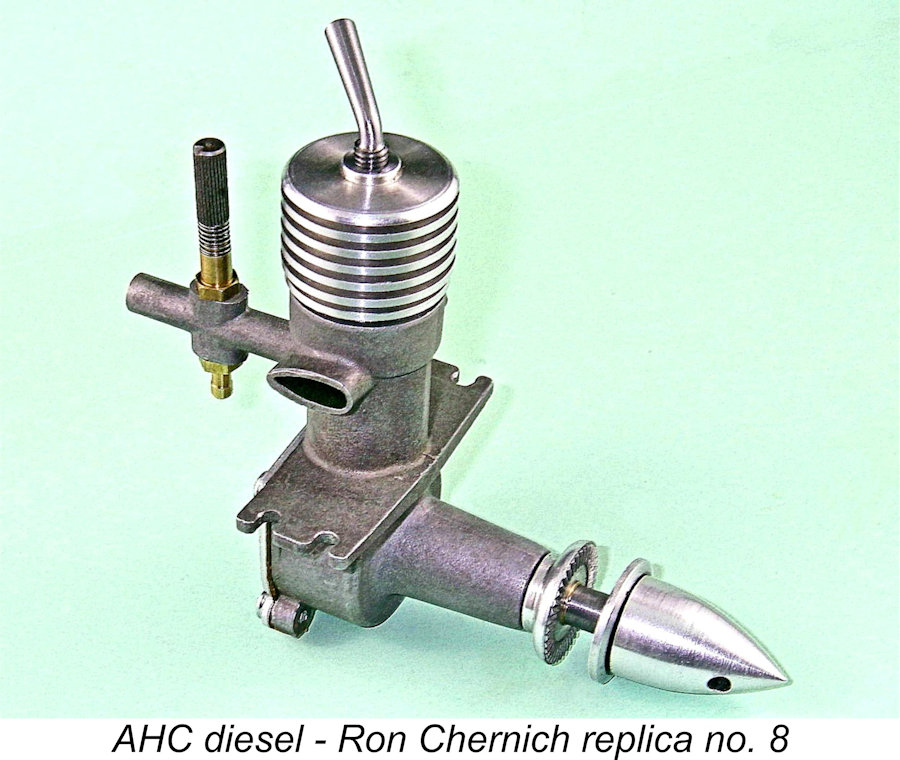 The MEN transfer article for September will deal with the AHC diesel from New York. I already transferred the companion article about the Deezil, also from New York, so I feel that it’s only fair to give the rival AHC design equal time on this website. Even though the AHC never actually reached the series production stage, its story makes a fascinating read for anyone interested in the development of model engines during the early years. There’s a great deal to be learned from this story! The article will include a full range of tests, some of which may surprise you!
The MEN transfer article for September will deal with the AHC diesel from New York. I already transferred the companion article about the Deezil, also from New York, so I feel that it’s only fair to give the rival AHC design equal time on this website. Even though the AHC never actually reached the series production stage, its story makes a fascinating read for anyone interested in the development of model engines during the early years. There’s a great deal to be learned from this story! The article will include a full range of tests, some of which may surprise you!
I think that about does it for this edition. All being well, I'll be back to you with another edition on or about September 1st, 2023. Meanwhile, please accept my best wishes for continuing the process of getting past the current waves of misinformation and rhetoric to the reality of the unmistakeable challenges facing all of us. Keep yourself well informed from credible sources and trust your own informed opinions rather than the fantasies of others whose focus is entirely on themselves and their own agendas. Ignore them and the misinformation that they spread, make up your own mind based on authoritative current information and act accordingly! It’s your future and that of your kids and grand-kids.………. don’t let others having conflicting self-centred agendas or politically-motivated delusions decide it for you and for them!
Cheers,
Adrian Duncan
British Columbia, Canada
___________________________________
Note regarding material to be found on this site - unless specifically otherwise noted, all images and text which appear on this site are my own work, and I hereby assert my right to be recognized as the originator of this material. For the record, this material is made freely available to all upon two firm conditions:
- No commercial use of any kind is to be made of any of the images or text posted on this site without my express written consent.
- No use of any kind, commercial or otherwise, is to be made of any material published in any form on this site without full and open acknowledgement of the source.
Adrian C. Duncan
British Columbia, Canada

 Greetings once more from all-too sunny Coquitlam! Well, August is upon us, which means that we’re now well into summer. Unfortunately, the elevated temperatures and lower-than-normal rainfall that have accompanied the season due to the progressive advance of climate change have continued to challenge Western Canada with a plethora of forest fires and a developing water shortage. Over two-thirds of the Province of British Columbia is now at Level 5 drought status - the highest level, at which adverse impacts upon both communities and ecosystems are considered to be inevitable. By contrast, folks in other areas of North America have been getting way more water than they need! Wish we could work a mutually-beneficial trade ............
Greetings once more from all-too sunny Coquitlam! Well, August is upon us, which means that we’re now well into summer. Unfortunately, the elevated temperatures and lower-than-normal rainfall that have accompanied the season due to the progressive advance of climate change have continued to challenge Western Canada with a plethora of forest fires and a developing water shortage. Over two-thirds of the Province of British Columbia is now at Level 5 drought status - the highest level, at which adverse impacts upon both communities and ecosystems are considered to be inevitable. By contrast, folks in other areas of North America have been getting way more water than they need! Wish we could work a mutually-beneficial trade ............ Confirmation that a significant number of folks are seeking an escape from all that ails us by remaining very much engaged with our hobby comes from the fact that the mail box has remained quite active. Despite the many distractions still preying upon us, I heard from quite a few of you during July, including (in no particular order) Peter Valicek, Gordon Beeby, Dave Zwolak, Don Imrie, Alex Phin, Rich Kacmarsky, Luis Petersen, Michel Rosanoff, William Poli, Maris Dislers, David Burke, Dean Clarke, Jon Fletcher, Tahn Stowe, Chris Cox, Tim Dannels, Brian Hampton, Tony Eifflaender, Ken Croft, Bill Wells, Andrew Longhurst, Martin Dilly, Marcus Tidmarsh, Ian Howlett, Doug Campbell, David Hill, David Morrissey, Paul Smigelski, Tiffany Evans, Sergio Montes, Dennis Merwood, Bob Beaumont, Bob Watts, John French, Amadeus Kurz, Barry Mourant, Mike Conner, Kelley Crozier, Wes Pettinger, Wynn Paul, Larry Davidson, Chris Cox and Neill McRae. Apologies to anyone whom I may have inadvertently missed in the crowd, and apologies also to anyone whose message(s) went unanswered - things do slip through the cracks, especially when I’m distracted! The
Confirmation that a significant number of folks are seeking an escape from all that ails us by remaining very much engaged with our hobby comes from the fact that the mail box has remained quite active. Despite the many distractions still preying upon us, I heard from quite a few of you during July, including (in no particular order) Peter Valicek, Gordon Beeby, Dave Zwolak, Don Imrie, Alex Phin, Rich Kacmarsky, Luis Petersen, Michel Rosanoff, William Poli, Maris Dislers, David Burke, Dean Clarke, Jon Fletcher, Tahn Stowe, Chris Cox, Tim Dannels, Brian Hampton, Tony Eifflaender, Ken Croft, Bill Wells, Andrew Longhurst, Martin Dilly, Marcus Tidmarsh, Ian Howlett, Doug Campbell, David Hill, David Morrissey, Paul Smigelski, Tiffany Evans, Sergio Montes, Dennis Merwood, Bob Beaumont, Bob Watts, John French, Amadeus Kurz, Barry Mourant, Mike Conner, Kelley Crozier, Wes Pettinger, Wynn Paul, Larry Davidson, Chris Cox and Neill McRae. Apologies to anyone whom I may have inadvertently missed in the crowd, and apologies also to anyone whose message(s) went unanswered - things do slip through the cracks, especially when I’m distracted! The  I’ll begin this month’s news update with an announcement which you won’t see here very often – the introduction of a new feature on this website! During June, my friend and colleague Wes Pettinger of Richardson, Texas sent in a very enjoyable anecdote about his first model engine - a
I’ll begin this month’s news update with an announcement which you won’t see here very often – the introduction of a new feature on this website! During June, my friend and colleague Wes Pettinger of Richardson, Texas sent in a very enjoyable anecdote about his first model engine - a 
 Last month’s article on the
Last month’s article on the 
 Another very interesting and unusual arrival during July was a rare example of the OK Cub .149 cuin. diesel. The 1952 Cub .149 cuin. glow-plug model is of course very well known, but the fact that a handful of examples of a diesel version were made in 1953 is far less frequently recalled. This model was accompanied by a diesel of .060 cuin. displacement which also never reached full production status. The exact number completed is unclear, but it seems safe to say that fewer than 500 examples of these engines were actually produced. They were never advertised in the USA, apparently being sent mostly to Europe and South America for field testing below the radar prior to the finalization of the design of the
Another very interesting and unusual arrival during July was a rare example of the OK Cub .149 cuin. diesel. The 1952 Cub .149 cuin. glow-plug model is of course very well known, but the fact that a handful of examples of a diesel version were made in 1953 is far less frequently recalled. This model was accompanied by a diesel of .060 cuin. displacement which also never reached full production status. The exact number completed is unclear, but it seems safe to say that fewer than 500 examples of these engines were actually produced. They were never advertised in the USA, apparently being sent mostly to Europe and South America for field testing below the radar prior to the finalization of the design of the  Last month I reported on the auction of part of Ukrainian resident Alexandr Matusha’s engine collection which is intended to raise some extra funds to help him resume his Karkiv-based business making high-quality model engines following the disastrous impact of the ongoing Russian assault on Ukraine. A reminder was included in issue no. 1035 of “
Last month I reported on the auction of part of Ukrainian resident Alexandr Matusha’s engine collection which is intended to raise some extra funds to help him resume his Karkiv-based business making high-quality model engines following the disastrous impact of the ongoing Russian assault on Ukraine. A reminder was included in issue no. 1035 of “ name under which the engine is offered by Redfin. However, it’s actually un-anodised, like the original Rivers engines, actually making it a closer mini-replica. Price is £125 plus postage. My own example no. 004 has already arrived, and it more than meets all of my expectations. Congratulations to Alexandr! l gather that Maris Dislers will have a review in “
name under which the engine is offered by Redfin. However, it’s actually un-anodised, like the original Rivers engines, actually making it a closer mini-replica. Price is £125 plus postage. My own example no. 004 has already arrived, and it more than meets all of my expectations. Congratulations to Alexandr! l gather that Maris Dislers will have a review in “ The first chapter is a short history of the development of model airplanes, starting with Leonardo da Vinci and going through all types of gliders, the first model airplane engines, the start of control line in 1937 and also the beginnings of radio control. Thereafter, each year from 1945 to 2014 is the subject of a separate chapter which summarizes that year’s control-line stunt developments in terms of airplanes, engines, the stunt pattern, building methods, kit releases, planes in magazine articles, bios of fliers, results of Nationals, Team Trials, World Championships, results of other high-profile contests, etc., etc. The various chapters are extensively illustrated. Appendix One is a compilation of over 1600 stunt plane specs from 1937 to 2014.
The first chapter is a short history of the development of model airplanes, starting with Leonardo da Vinci and going through all types of gliders, the first model airplane engines, the start of control line in 1937 and also the beginnings of radio control. Thereafter, each year from 1945 to 2014 is the subject of a separate chapter which summarizes that year’s control-line stunt developments in terms of airplanes, engines, the stunt pattern, building methods, kit releases, planes in magazine articles, bios of fliers, results of Nationals, Team Trials, World Championships, results of other high-profile contests, etc., etc. The various chapters are extensively illustrated. Appendix One is a compilation of over 1600 stunt plane specs from 1937 to 2014.  Once in a while, I experience the satisfaction of having a hitherto-unrecognized engine submitted by a reader identified by another reader. In my December 2022 Editorial I drew attention to a nice-looking but unidentified sideport diesel which had been brought to my attention by my good mate Peter Valicek. The image provided by Peter is seen at the left. I added this to my “
Once in a while, I experience the satisfaction of having a hitherto-unrecognized engine submitted by a reader identified by another reader. In my December 2022 Editorial I drew attention to a nice-looking but unidentified sideport diesel which had been brought to my attention by my good mate Peter Valicek. The image provided by Peter is seen at the left. I added this to my “ Turning now to this month’s lead articles, we have yet another threesome. This time, the mix is a little unusual – two of the three articles are on the same topic! The odd man out is a detailed review of the well-known
Turning now to this month’s lead articles, we have yet another threesome. This time, the mix is a little unusual – two of the three articles are on the same topic! The odd man out is a detailed review of the well-known  The MEN transfer article for August presents a history of the somewhat obscure
The MEN transfer article for August presents a history of the somewhat obscure 
